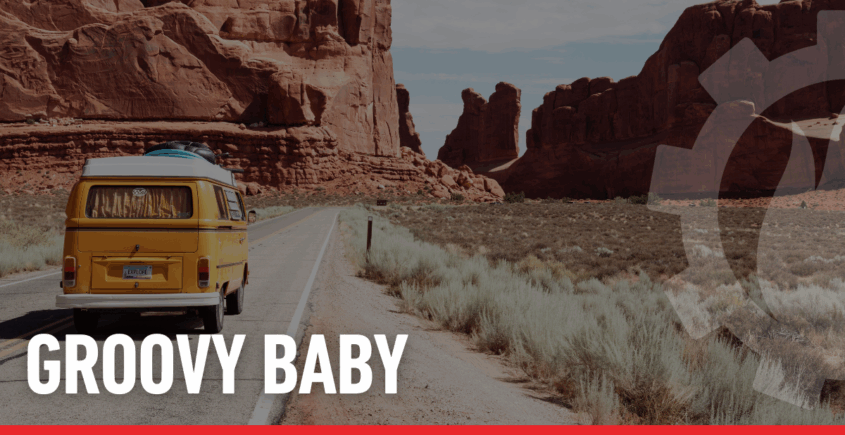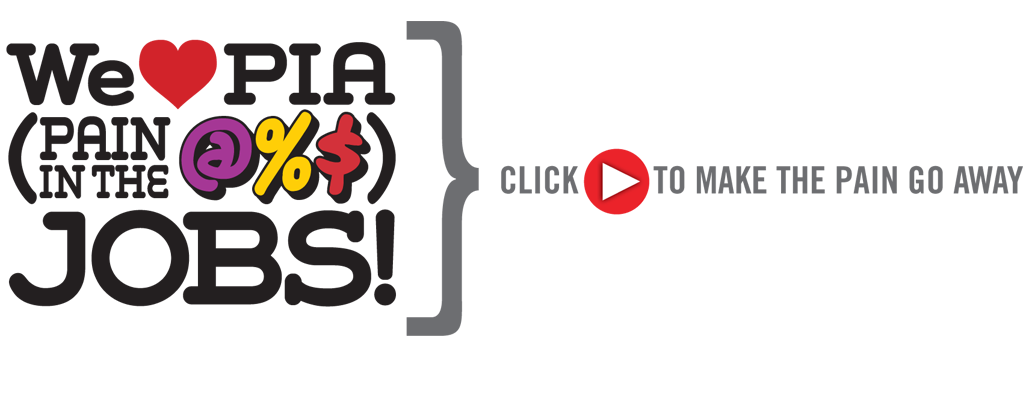Groovy Baby
Isn’t it groovy baby, how certain slang terms define periods of time? The other night, Jackie and I were watching an oldie movie, and the women were called “dames” and the men were “on the lam from the coppers” and needed to “lay low from the heat”. Our language has always been a reflection of its time, sort of a snapshot of culture, trends, music, and the attitudes of each generation. As a barely!! Baby boomers (born 1946–1964), growing up in one of the most transformative periods in American history, we enjoyed some of the coolest phrases of the ’60s and ’70s (“sock it to me baby”, flower power,” and “keep on truckin’”). Many of these slang phrases were incorporated into TV shows of the era. But slang didn’t start there, and it certainly didn’t end, as the younger kids continue to develop a whole language of their own, along with acronyms they use on social media and texting. Here’s a list of classics, and just some of today’s lingo. And as I like to say, “Alright fam, that’s the skinny – stay snatched, keep your rizz strong, avoid the mid vibes, and remember: if it’s giving groovy energy, no cap, you’re living your main character era – Word!” FYI, if I did use any of this slang, my children would be less than happy with me! Enjoy, and thanks to Google and Jennifer Freeman, Senior Editor of Word Smarts and Word Daily, for the inspiration and descriptions. Chill out and Enjoy!

Slang has been shaping the way we talk for centuries, constantly evolving alongside culture, music, fashion, and technology. From the cobblestone streets of 16th-century London, where thieves and merchants used “cant” to disguise their dealings, to the jazz-filled 1920s, when “cat’s pajamas” and “bee’s knees” defined what was cool, slang has always reflected the spirit of its time.
In the 1930s and ’40s, gangster lingo and Hollywood crime films gave us phrases like “on the lam” and “copper,” while the 1950s brought greaser talk, sock hops, and words like “cool cat” and “daddy-o.” The rebellious 1960s and 1970s added “groovy,” “far out,” and “right on,” while the 1980s cranked up the volume with “rad,” “gnarly,” and “totally tubular.” By the 1990s and 2000s, hip-hop, TV, and the internet began driving new terms like “phat,” “bling,” and “LOL.”
Today, slang spreads faster than ever thanks to TikTok, memes, and online culture. Words like “rizz,” “bet,” and “it’s giving” dominate Gen Z’s vocabulary, showing that slang remains what it’s always been: a living, breathing reflection of each generation’s identity. Here are some of my favorites:
Slang (’40s & ’50s)
Cat’s Pajamas / Bee’s Knees (adj.) — Something amazing or top-notch.
Popular in the swing era, these quirky expressions captured peak excitement. Today, you might just say “fire” or “lit.”
Daddy-O (n.) — A cool, smooth-talking guy.
Used heavily in the beatnik scene, immortalized in coffeehouse poetry nights and early rock ’n’ roll culture.
Cruisin’ for a Bruisin’ (phr.) — Looking for trouble.
Your grandparents probably heard this from their parents when they pushed boundaries in the ’50s.
Made in the Shade (adj.) — Having it easy or being set for success.
The ultimate “don’t worry, I’ve got this” phrase of its time.
Flip Your Lid (phr.) – Go crazy with excitement or anger.
“Dad flipped his lid when he saw the report card.”
Boomer Slang (’60s & ’70s)
Groovy (adj.) — Fashionable and exciting; enjoyable and excellent.
Derived from the jazz term “in the groove,” “groovy” became the ultimate compliment during the ’60s. If something was groovy, you were having a good time – maybe at Woodstock or cruising down Route 66 with the radio blasting.
Freak Flag (n.) — Open, proud, or defiant expression of individuality.
Jimi Hendrix made this famous in his 1967 anthem If 6 Was 9: “I’m gonna wave my freak flag high!” Still occasionally used today, it’s a reminder to embrace your weirdness unapologetically.
Foxy (adj.) — Attractive or sexy.
A high compliment in the ’60s, popularized by Hendrix’s Foxy Lady. While you might not hear it much today, it lives on in pop culture references — like Beyoncé’s “Foxxy Cleopatra” in Austin Powers: Goldmember (2002).
Bippy (n.) — A euphemism for your butt.
“You bet your sweet bippy!” became a catchphrase on Rowan & Martin’s Laugh-In in the late ’60s. Today, it sounds hilariously tame, but back then, it was edgy comedy.
Copacetic (adj.) — Everything’s in excellent order.
This one has mysterious origins but was widely used among boomers to mean “all good.” Even now, some older generations still slip it into casual conversation.
Boogie (v.) — To dance energetically or leave quickly.
Disco, roller rinks, and mirror balls — the ’70s were all about boogieing down. The word still pops up occasionally, but mostly in a nostalgic sense.
Cool Beans (excl.) — An expression of approval or excitement.
From ’60s kids to ’90s sitcoms like Full House, this one had a long run. Today, Gen Z might call it “cringe,” but some millennials are keeping it alive ironically.
The Skinny (n.) — The inside scoop or latest gossip.
Boomers didn’t “spill the tea” like Gen Z; they got “the skinny.” Same idea, different vibe.
Doofus (n.) — A silly or clueless person.
An all-purpose insult for siblings, classmates, and anyone acting goofy. Still around today, though “dummy” or “goober” might be more common replacements.
Totally Rad (’80s & ’90s) Slang
Gnarly (adj.) — Wild, intense, or awesome.
Originally surf slang, “gnarly” ruled the ’80s — especially after Fast Times at Ridgemont High and Teenage Mutant Ninja Turtles.
Like, Totally (adv.) — Valley Girl essential.
A defining phrase of ’80s teen culture, immortalized in Clueless (1995). Today, Gen Z ironically says “literally me” instead.
Homeboy / Homegirl (n.) — Close friend or ally.
Rooted in hip-hop culture, this one carried through the ’90s and still pops up today.
Phat (adj.) — Exceptionally cool or stylish.
An acronym for “Pretty Hot And Tempting,” this one dominated ’90s street slang but has since faded out.
As If! (excl.) — Complete rejection or disbelief.
Brought to fame by Alicia Silverstone in Clueless — still fun to say when you want to channel peak ’90s sass.
2000s & Millennial Favorites
Bling (n.) — Flashy jewelry or wealth.
Thanks to hip-hop and MTV, “bling” defined early 2000s celebrity culture.
Chillax (v.) — To chill + relax.
A hybrid word millennials coined that never really took off — but we all know what it means.
YOLO (excl.) — “You Only Live Once.”
Popularized by Drake’s 2011 song, it became the millennial motto for risky decisions.
Cray-Cray (adj.) — Over-the-top crazy.
A short-lived but memorable phrase of the early 2010s.
Popular Gen Z Slang in 2025
These are common across TikTok, Reddit, and real-life chats:
Rizz: Short for “charisma” or flirting ability.
Delulu: Playfully calls someone delusional, often with self-aware optimism.
Main Character Energy: When someone carries themselves like the star of their own movie – confident and dramatic.
It’s giving…: Used to comment on a vibe or aesthetic (e.g., “It’s giving retro villain vibes”).
No Cap: Means “no lie” or “seriously.”
Simp: Someone overly doting or obsessed with someone they like.
Snatched: Looking exceptionally good or well put together.
Caught in 4K: Being caught red-handed with undeniable proof.
Mid: Mediocre or underwhelming.
Slaps: “slaps” can mean something really good, positive
Brain Rot: The exhaustion or cognitive dullness from consuming too much low-quality digital content.
Sigma: The lone, independent personality type—non-conformist and self-reliant.
Yassified: Over-glamorized or excessively edited appearance.
Periodt: Ends statements with finality—“and that’s final.”
Ohio: Denotes something cringe, odd, or awkward.
The Tea (n.) — Gossip or inside scoop. Boomers had “the skinny,” millennials had “the 411,” and now Gen Z has “the tea.”
If I missed any of your new favorites, let me know: skowalski@khtheat.com






Leave a Reply
Want to join the discussion?Feel free to contribute!